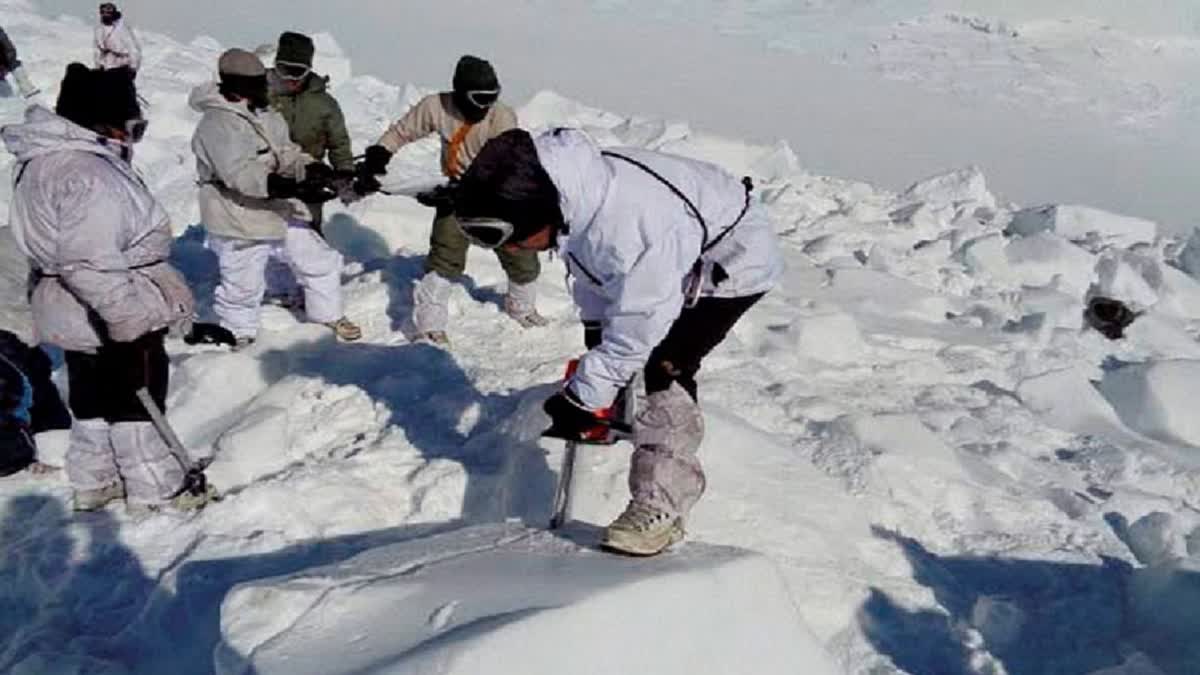Leh: Veterans who served in the challenging conditions of Siachen Glacier in Ladakh have recalled their difficult experiences, highlighting both the hardships and improvements over the years.
From limited communication facilities and dangerous terrain to the recent inauguration of 5G services, soldiers share their stories of perseverance in one of the world’s harshest environments. In the past, soldiers would travel on foot for days, often carrying heavy loads across perilous paths, sometimes for up to 18 days, and survive in freezing conditions where rations were quickly frozen and communication was almost impossible.
Veterans now express gratitude for the significant advancements that have made life in Siachen more bearable, including better communication networks, improved food supplies, and safer accommodations. The recent introduction of the 5G network, inaugurated on Veterans Day, is seen as a game-changer for soldiers, especially non-local ones, allowing them to connect with their families more easily. These changes come after decades of sacrifices, as soldiers remember their struggles with limited resources and the resilience of the human spirit in the face of adversity. Despite the challenges, they remain deeply grateful for the progress that has been made, from improved facilities to safer routes, ensuring a brighter future for those serving in the region.
Siachen Glacier is considered one of the most expensive and costliest battlefields in the world. The cost of maintaining the outposts on the glacier is estimated to be around $1 million per day.
The introduction of 5G services on the Siachen glacier was announced by the Army on X.
"Fire and Fury Corps in collaboration with Jio Telecom successfully installed the first ever 5G Mobile Tower on the Siachen Glacier.This indomitable feat is dedicated to our brave soldiers who are deployed in challenging conditions. Fire and Fury Signallers and Siachen Warriors overcame harsh terrain and extreme temperatures below -40°C to install the 5G BTS at North Glacier,” the Army wrote in a post.
Honorary Captain Sonam Morup said that during 1982 and 1984, he served in Siachen. Recalling the harrowing experience, he said, "At that time, the conditions were extremely difficult due to the lack of communication. We used to travel by horse, and once a month, a helicopter would arrive. We sent messages to our families using blue and green envelopes. Most of our rations came from Chandigarh because the roads in Leh were often blocked. Our deployments in Siachen lasted anywhere from three to nine months. Back then, there was absolutely no means of communication available.”
"Back in 1979, we had to travel on foot for 18 days and cross the Shyok River 3-4 times while carrying arms, rations, and bedding. Although horses were available to carry some of the supplies, it was still extremely challenging. Despite the difficulties, we served there happily without facing casualties or hunger issues, thanks to the blessings of the deities. Those are the memories we cherish," he continued.
Thsewang Dorjee, a retired soldier, who served in Siachen twice, once in 2003 and then again in 2017, also expressed his views over the changing times.
"At that time, there were no proper communication facilities; we could only talk to our families once a week, and that too for just 5 to 10 minutes. We used ropes to traverse the dangerous routes. For water, we melted ice and snow, which we then used for cooking, bathing, and other necessities. Our diet mostly consisted of dried fruits and vegetables, and we get fresh fruits or vegetables only once a week, " he added.
